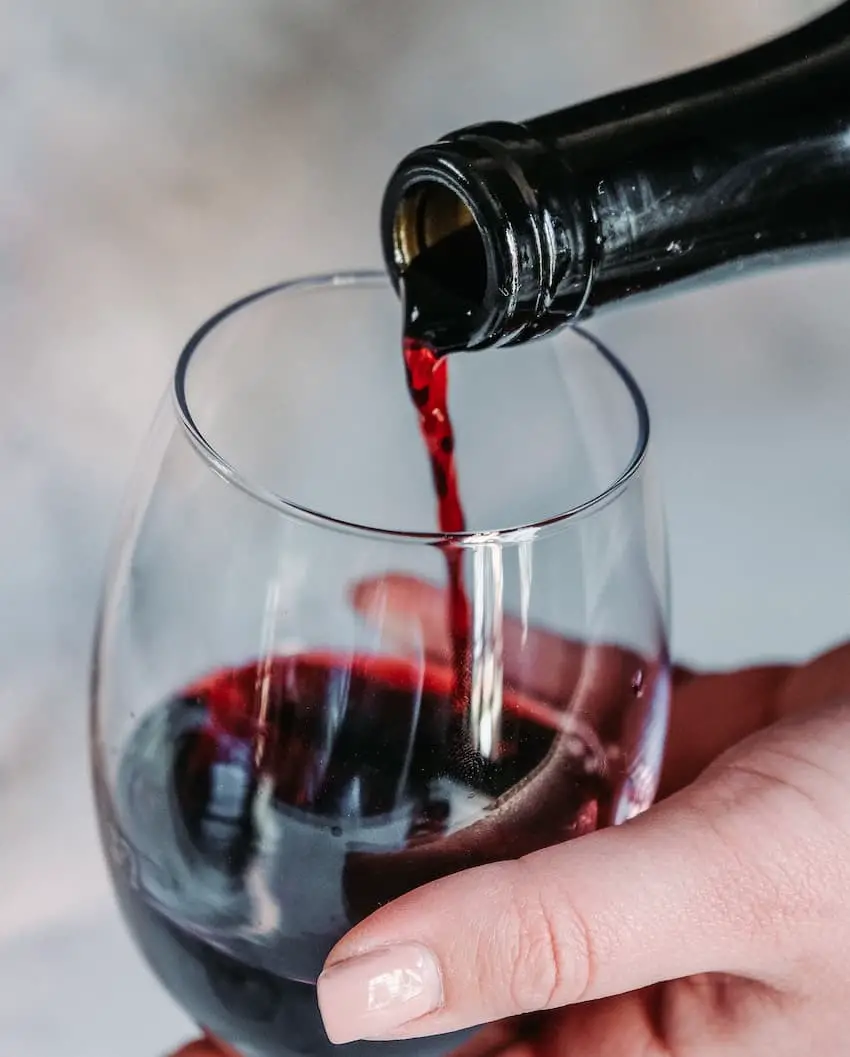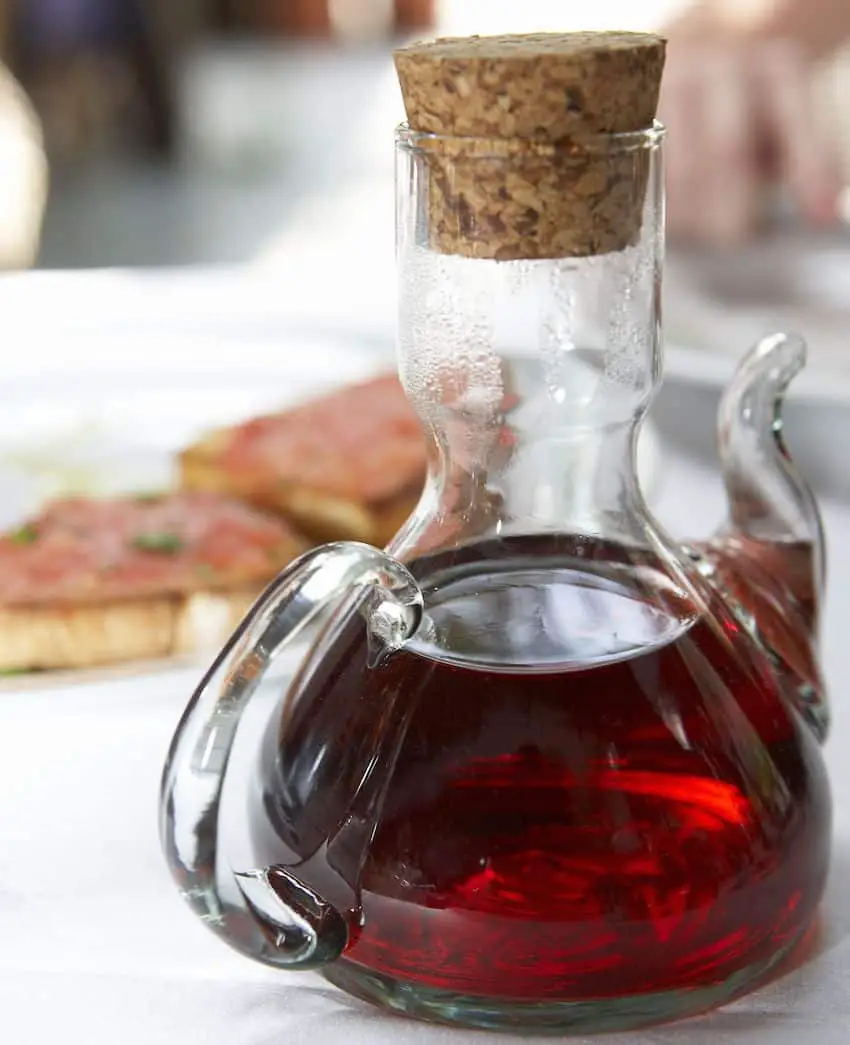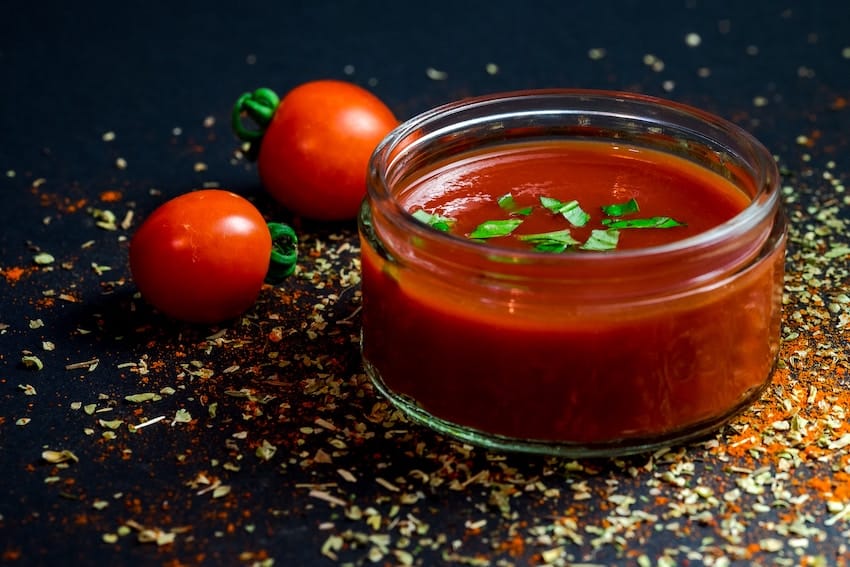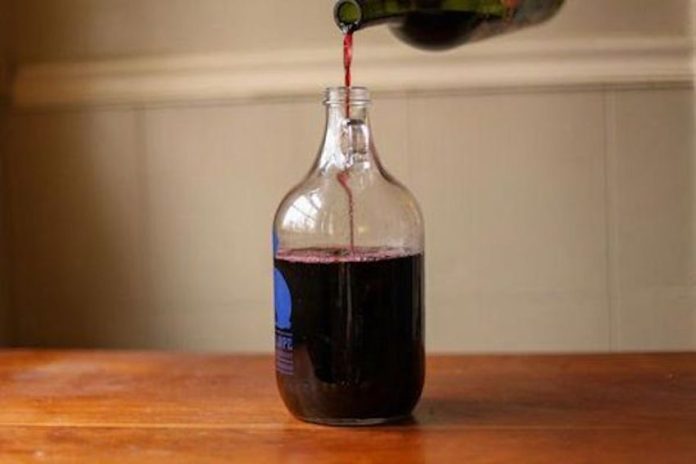It began as a problem: single woman and light drinker that I am, an open bottle of wine can last me three or four days. What is the problem, you say? Well, I don’t want to drink every night, and sometimes there’s no one to invite over.
Much like making lemonade out of lemons, my solution was to make vinegar. Turns out it’s quite simple, and I feel foolish for not knowing this before.

Besides wine, you also need a vinegar “mother” — a harmless bacteria that feeds on the sugars in the alcohol — to start the fermentation process. The easiest method is to use Bragg’s Organic Apple Cider Vinegar, found in most big-box grocery stores and health food stores in Mexico and also on Amazon México. I always have a bottle of it in my fridge for making salad dressings. Those brown “flakes” floating in the apple cider vinegar, or sometimes congealed into a gelatinous disc in the bottle, are the mother.
While unattractive, it’s harmless and, some say, gives the vinegar certain health benefits, like helping with weight loss and skin health, lowering blood sugar levels, reducing cholesterol and improving diabetes symptoms. The acetic acid also kills harmful bacteria. Some people like to drink a spoonful of apple cider vinegar in a glass of water every day.
Into a Mason jar, I poured my leftover half-bottle of wine, added ¼ cup of cider vinegar, stirred it well, rubber banded a coffee filter over the top, and set it in my cupboard to ferment. I marked my calendar with both the start day and the three-week point.
That day came and folks, it was vinegar—delicious, complex, perfect red wine vinegar. (I know what my friends are getting for Christmas gifts this year!) I decided to let it sit another three weeks and then strained out the mother (to stop the fermentation and prevent it from turning moldy). I poured it into a bottle with a long neck and a more identifiable vinegar-bottle shape and excitedly drizzled some over a lunch salad with olive oil, salt and pepper.
Delicious!

Red Wine Vinegar
- 1 (750-ml) bottle of good red wine*
- ½ cup live raw vinegar (like Bragg’s Apple Cider Vinegar) or vinegar mother
* Wines with an alcohol content of 8% or lower do not need additional water added.
Choose a clean container that leaves plenty of headspace so the oxygen can work its fermentation magic, like a wide-mouthed half-gallon glass jar or ceramic crock. Fill the container no more than three-quarters full. Stir well to aerate the wine, then add the live raw vinegar or mother. (If needed, add water until jar is about three-quarters full.) Cover jar with cheesecloth or a coffee filter, using a rubber band to keep it in place.
Leave the jar undisturbed in a dark place at room temperature for 3-4 weeks, checking regularly to see that a vinegar mother (a translucent, gelatinous disk) is growing on the surface and no mold is forming. (If you see green, black or white mold, throw out the mixture and start over.) You should begin to smell vinegar after a few weeks.
Continue to ferment for about two months, checking and tasting every week. When the alcohol acidifies, it will taste like vinegar and make your mouth pucker. Once it’s to your liking, strain the vinegar through cheesecloth and transfer it to a bottle with a tight seal or cork. The vinegar can be used as-is or aged in the bottle up to a year to mellow its flavor.
Reserve the mother to make future batches, storing it in enough vinegar to cover and refrigerating until ready to begin again.
To make a smaller batch, reduce the wine and raw vinegar as desired, retaining the ratio of one part vinegar to three to four parts wine (for example, ½ cup vinegar to 1½ cups wine for a 2-cup batch).
Raspberry Vinegar
Use this for all sorts of summer drinks!
- 1 cup red wine or apple cider vinegar
- 1½ quarts fresh raspberries or strawberries
- Sugar
In a nonreactive bowl, combine vinegar and berries. Cover, refrigerate and let macerate at least 1 or up to 3 days.
Mash berries in the bowl; strain liquid through a fine-mesh sieve. To every 1 cup of juice, add 1¼ cups sugar. Combine juice and sugar in a saucepan. Bring to a boil, then gently simmer 15 minutes. Let cool, then bottle. Keeps refrigerated up to 3 months.
To serve, add 1 tsp. raspberry vinegar to a tumbler filled with ice. Add water, sparkling water, rum, brandy or prosecco.

Avocado and Onion Salad
- 2-4 avocados, depending on size
- Salt and pepper
- 1 small white onion, thinly sliced
- 3 Tbsp. red wine vinegar or lime juice, plus more as needed
- 1 Tbsp. olive oil, plus more as needed
For clean avocado wedges, halve each avocado and remove pit. Place halves cut sides down, then cut through the skin into 1-inch thick wedges.
Peel skin off each wedge. Arrange avocado on a platter or plates. Sprinkle with salt. Separate the rings of the onion; arrange on top of the avocado. Season with salt and pepper; drizzle with vinegar and olive oil. Eat right away.
Tomato Ketchup
- 4 pints ripe grape tomatoes or equivalent amount ripe plum tomatoes
- 2 cups red wine vinegar
- ⅔ cup dark brown sugar
- 4 tsp. salt
- 2 tsp. black pepper
- ¾ tsp. Worcestershire sauce
Cut grape tomatoes in half and larger varieties in quarters or smaller. In a wide skillet, simmer tomatoes, vinegar, sugar, salt and pepper until a thick jam-like mixture forms and the liquid evaporates, 20–25 minutes.
Purée with a blender or food processor until smooth. Strain through a fine-mesh sieve. (For a perfectly smooth texture, strain twice.) Stir in Worcestershire. Chill before serving.
Yield: About 2 cups.

Quick Pickled Onions
- Raw red or white onion, sliced, cut into rings, or diced (as much as you need for your recipe)
- Salt
- Red wine vinegar to cover
Put the onion in a nonreactive vessel (like a glass Mason jar) along with a large pinch of salt. Pour enough vinegar on top to just cover. Let stand, stirring once or twice, for at least 15 minutes and up to 1 hour (the onion will grow softer and more pickled-tasting as it sits).
Drain and use on sandwiches, tacos, gorditas, quesadillas, salads, etc. Store, refrigerated, up to 1 week.
Janet Blaser is the author of the best-selling book, Why We Left: An Anthology of American Women Expats, featured on CNBC and MarketWatch. She has lived in Mexico since 2006. You can find her on Facebook.
